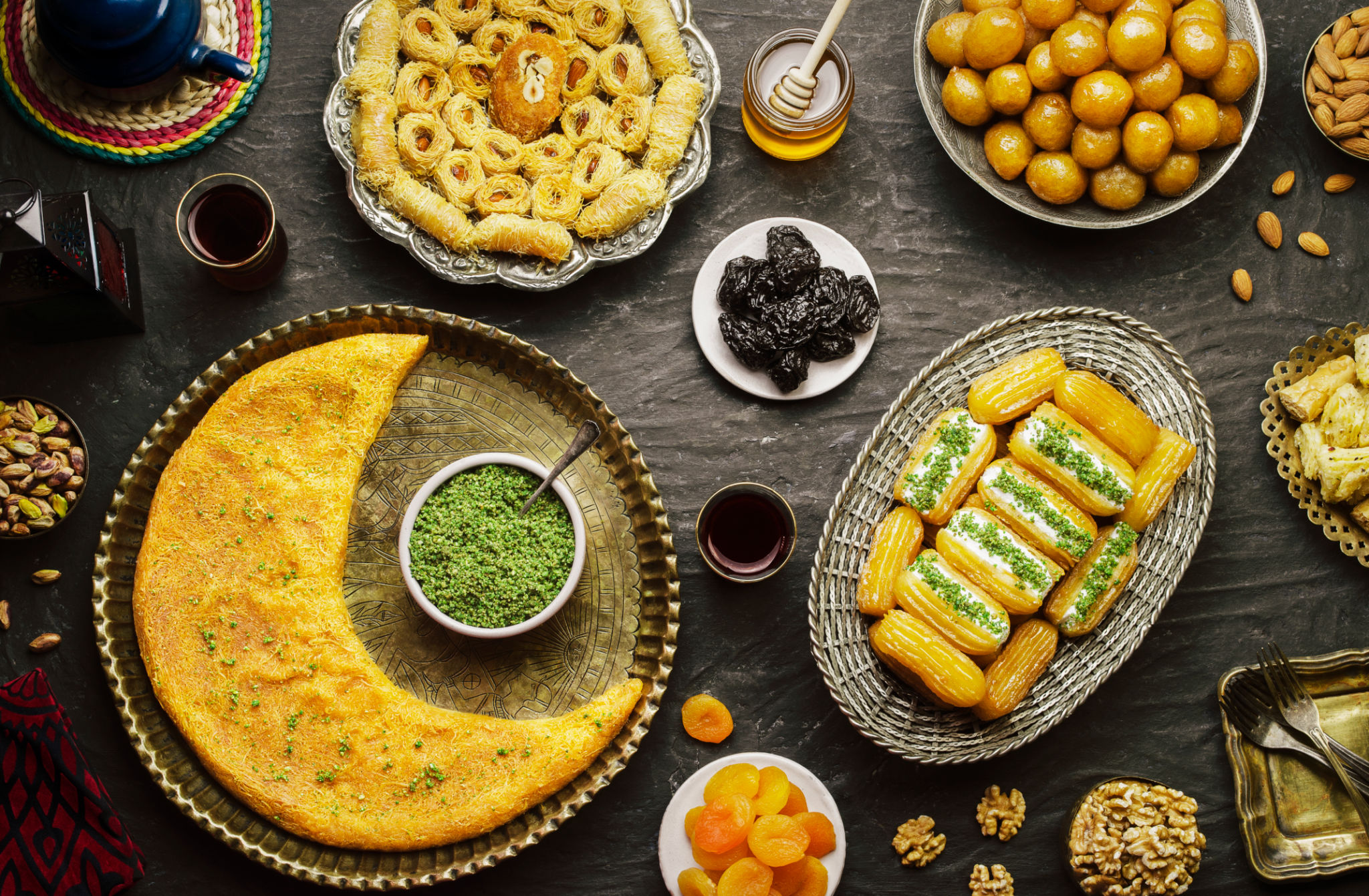Creating Your Own Middle Eastern Dessert Experience at Home
Discover the Magic of Middle Eastern Desserts
Middle Eastern desserts are renowned for their rich flavors, aromatic spices, and unique textures. From the nutty sweetness of baklava to the delicate floral notes of rosewater-infused treats, these desserts offer an exotic experience that tantalizes the senses. Creating your own Middle Eastern dessert experience at home can be a delightful culinary adventure, allowing you to explore new ingredients and techniques.

Essential Ingredients for Middle Eastern Desserts
To embark on your dessert-making journey, it's important to stock up on some key ingredients commonly used in Middle Eastern sweets. These include:
- Phyllo Dough: A paper-thin pastry used in many layered desserts like baklava.
- Nuts: Pistachios, almonds, and walnuts are frequently used for their rich flavor and crunchy texture.
- Spices: Cardamom, cinnamon, and cloves add warmth and depth to desserts.
- Floral Waters: Rosewater and orange blossom water lend a fragrant aroma and taste.
- Honey: This natural sweetener is often drizzled over confections for added sweetness.
Crafting Traditional Baklava
Baklava is perhaps one of the most iconic Middle Eastern desserts. Its layers of crispy phyllo dough, interspersed with a mixture of nuts and spices, are bound together with a sticky, sweet syrup. To make baklava at home, you'll need to carefully layer the phyllo sheets, brushing each with melted butter before adding the nut mixture. Once baked to golden perfection, a syrup made from sugar, honey, and lemon juice is poured over the top to infuse each layer with sweetness.

Exploring Kunafa: A Textural Delight
Kunafa is another beloved dessert that offers a unique textural experience. Made with shredded phyllo dough or semolina dough, it's typically filled with sweet cheese or a custard-like filling. The dessert is baked until golden and then soaked in a simple syrup flavored with rosewater or orange blossom water. The result is a crispy exterior that gives way to a luscious, gooey interior.
Creating Ma'amoul: A Festive Treat
Ma'amoul are traditional shortbread cookies filled with dates, nuts, or figs. These delightful treats are often made during holidays and special occasions. The dough is typically made from semolina or flour and is shaped using special wooden molds to create intricate patterns. Once baked, they are dusted with powdered sugar and enjoyed with a cup of strong coffee or tea.

Simplifying the Process with Modern Twists
If you're not quite ready to dive into traditional methods, there are modern twists on these classic desserts that simplify the process while still delivering authentic flavors. You can try making a quick baklava-inspired ice cream by folding crushed nuts and honey into vanilla ice cream, or whip up a rosewater panna cotta for a refreshing take on floral-infused sweets.
Tips for Successfully Making Middle Eastern Desserts
When attempting Middle Eastern desserts at home, keep these tips in mind:
- Read recipes thoroughly before starting to understand the steps and techniques involved.
- Use fresh ingredients, especially when it comes to nuts and spices, to ensure the best flavors.
- Be patient; some desserts require time for flavors to meld or for syrups to soak in properly.
Enjoying Your Homemade Creations
The beauty of making Middle Eastern desserts at home lies not only in the end product but in the process itself. As you savor each bite of your creation, you'll appreciate the intricate blend of flavors and textures that define these sweets. Whether you're hosting a dinner party or simply indulging your sweet tooth, your homemade Middle Eastern desserts are sure to impress.

Embarking on this flavorful journey opens up a world of culinary possibilities. With each recipe you try, you'll gain a deeper appreciation for the rich traditions and vibrant tastes of Middle Eastern cuisine.
